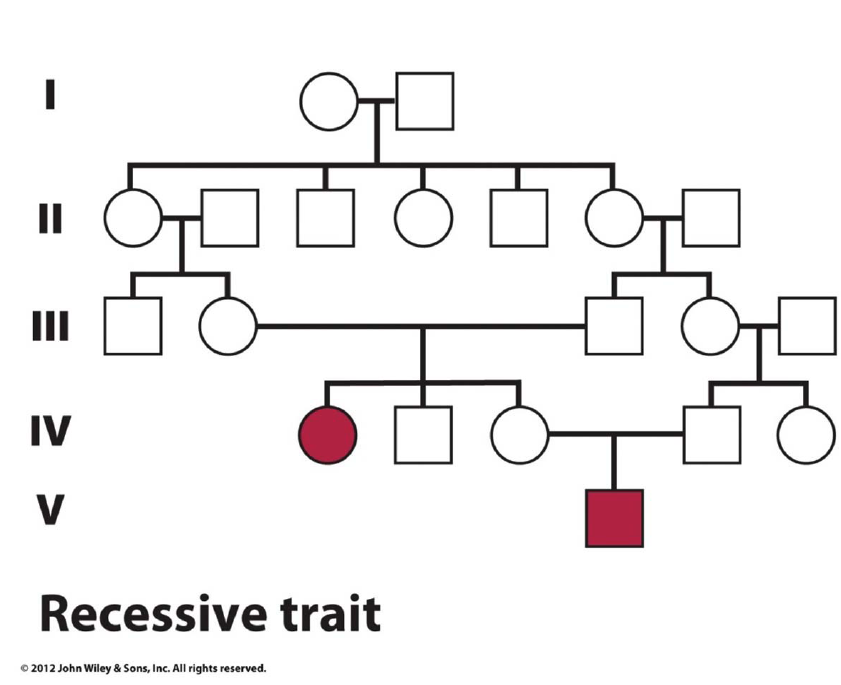L03 Principles of Inheritance
一、Theories Explain Transmission of Hereditary Traits
Theory of pangenesis (泛生论)
“Seeds” are produced by all parts of the body
- Collected in the reproductive organs
- Then transmitted to offspring at moment of conception
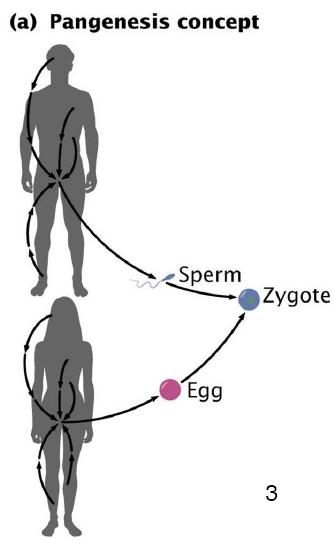
Preformation Theory (先成论)
People using early microscopes thought they saw a miniature human in the sperm
With proper nourishment the miniature human unfolds into its adult proportions
The Spermists believed the characteristics of the future person were found in the sperm
The Ovists believed the characteristics of the future person resided in the egg
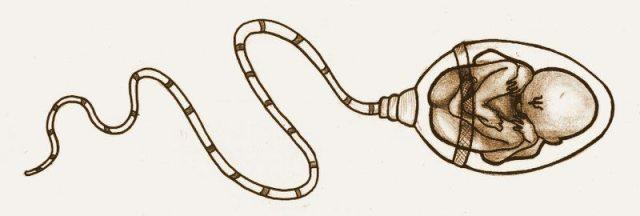
Theory of Blending Inheritance(混合遗传)
The theory is that the progeny inherits any characteristic as the average of the parents’ values of that characteristic.
As an example of this a crossing of a red flower variety with a white variety of the same species would yield pink-flowered offspring.

二、Mendelian inheritance 孟德尔定律
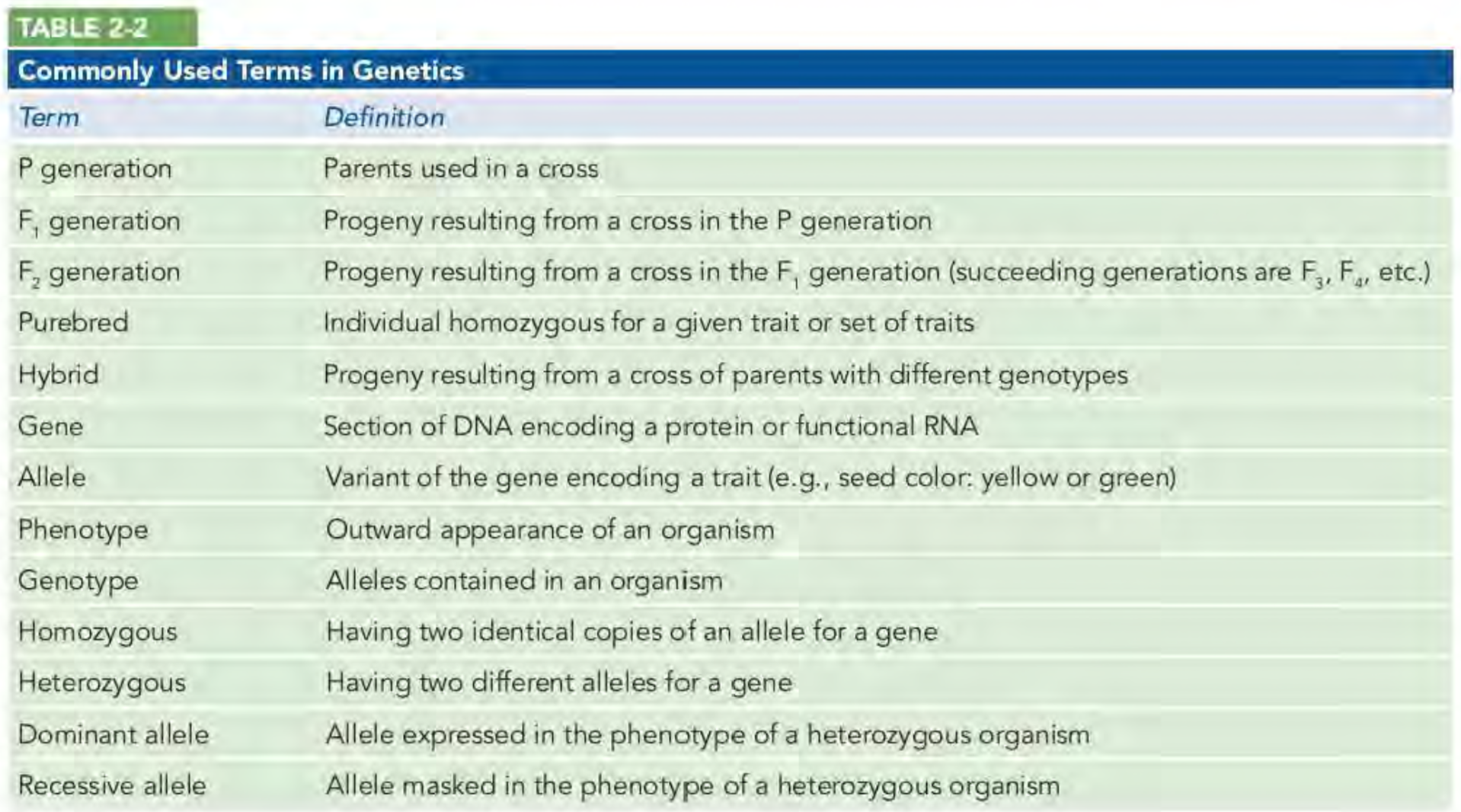
Principle of Dominance
In heterozygote, one allele may hide the presence of another.
Mendel’s First Law (The Principle of Segregation)
In a heterozygote, two different alleles segregate from each other during the formation of gametes.
Mendel’s First Law: Allele Pairs Segregate(分离) during Gamete Formation.
Mendel’s first law, or the law of segregation, which states that equal and independent segregation of alleles occurs during formation of gamete cells.
Mendel’s Second Law (The Principle of Independent Assortment)
The alleles of different genes assort independently of each other.
Mendel’s Second Law: Different Genes Assort Independently during Gamete Formation.
Mendel’s second law, or the law of independent assortment, states that different genes assort into gametes independently of one another.
Exceptions to Mendel’s Laws
(1)Incomplete Dominance 不完全显性
Some alleles of a gene are neither dominant nor recessive. Instead, hybrid progeny(后代) display a phenotype intermediate between those of the two parents.
Examples:Flowering time;花色
(2) Codominance 共显性
Recessive alleles often produce nonfunctional proteins, or none at all. However, there are many examples of two alleles of a gene that produce two different functional proteins, neither of which is dominant to the other.
Examples:血型
(3)Linked Genes 基因连锁
Alleles for two different genes assort together in the gametes, rather than assorting independently.
Genes that are close together on one chromosome are inherited together, contrary to Mendel’s second law.
Monohybrid Crosses
(1)True breeding or pure breeding 纯系
A true-breeding plant is one that, when self-fertilized, only produces offspring with the same traits. True-breeding organisms are genetically identical and have identical alleles for specified traits. The alleles for these type of organisms are homozygous.
(2)Monohybrid cross 单基因杂交
genetic cross between two true breeding individuals with different alleles at one genetic locus of interest
- One given trait/character is studied, which is controlled by a single gene locus.
- One parent having two dominant alleles and the other two recessives in this locus
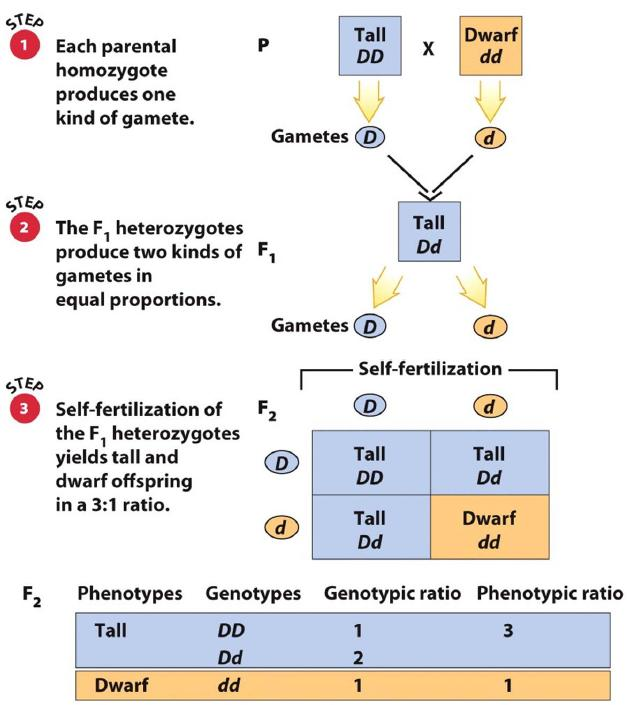
The approximately a 3:1 ratio between the dominant trait and the recessive trait in F2 shows The Principle of Segregation.
Dihybrid crosses
Cross with two traits
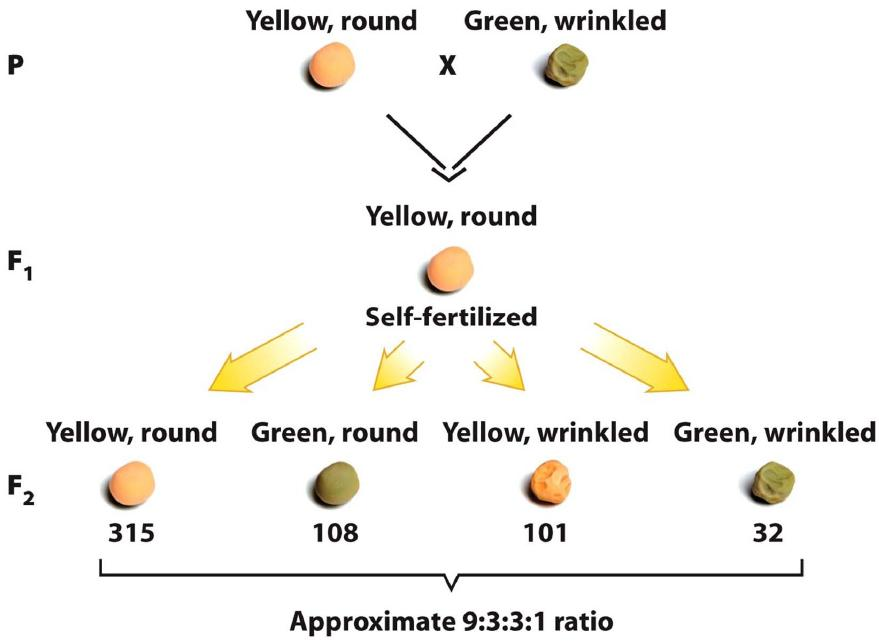
The 9:3:3:1 ratio in F2 shows The Principle of Independent Assortment and The alleles of different genes assort (segregate) independently of each other.
三、Probability
Mendel’s principles can be used to predict the outcomes of crosses between different strains of organisms
methods to predict outcomes
The Punnett Square Method
The Forked‐Line Method
Sum Rule
如果事件A和B,are mutually exclusive,则:
$$
P(A\ or \ B) = P(A)+P(B)
$$
Product Rule
If two events A and B are independent, then the probability of both events is the product of the probabilities for each event.
$$
P(A \text{ and }B) = P(A)\cdot P(B)
$$
To Calculate the result
(1)Punnett Square Method
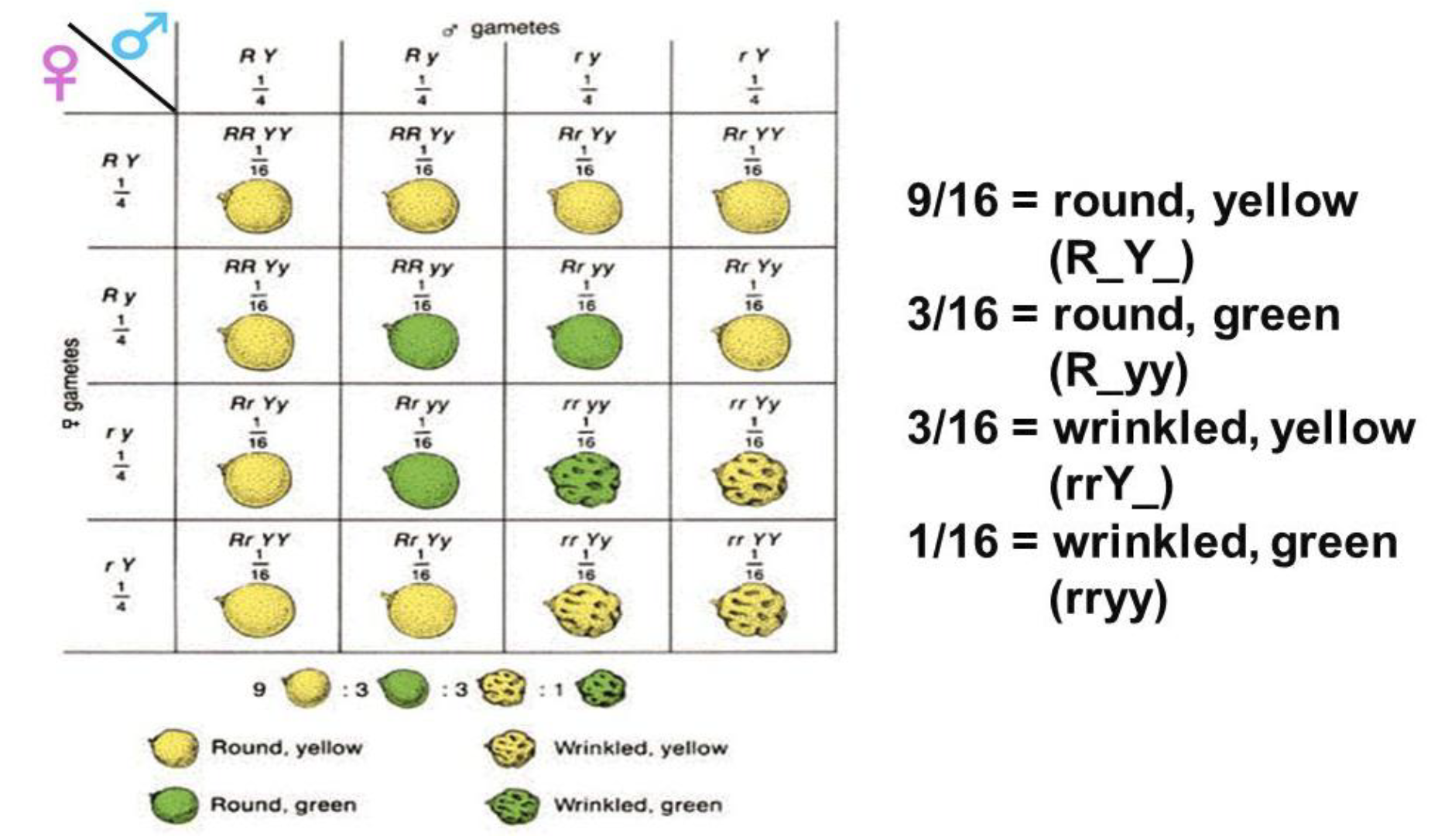
(2)The Forked-line Method 树形法、叉线法
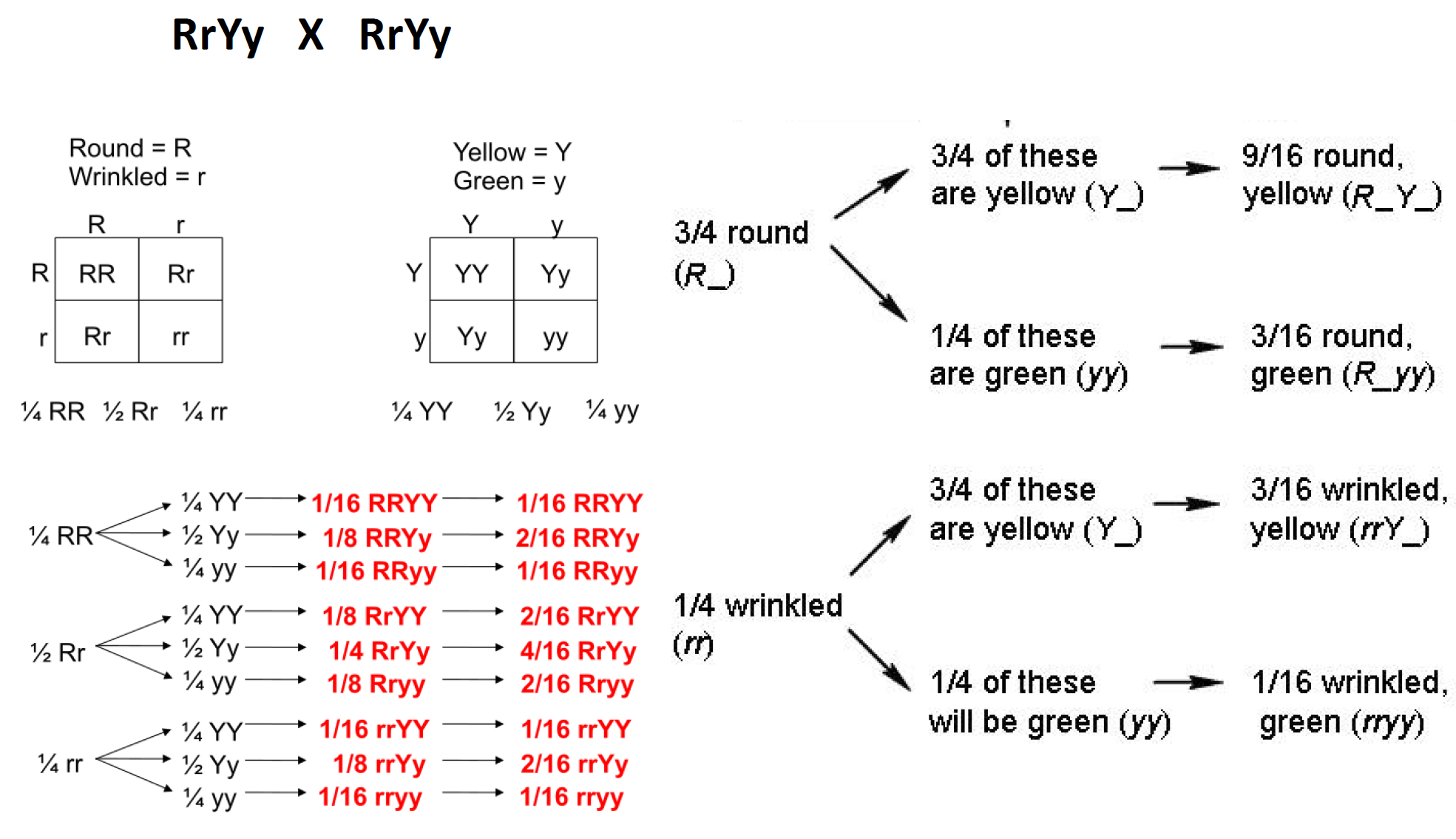
To Test the Accuracy of Expectation
1. The Chi Square Test
Method
A statistical method used to determine goodness of fit (适合度,适配度,拟合度)
The chi square test does not prove that a hypothesis is correct
It evaluates whether or not the data and the hypothesis have a good fit
The formula:
$$
X^2 = \sum \frac{(O-E)^2}{E}
$$
where
O = observed data in each category
E = expected data in each category based on the experimenter’s hypothesis
$\sum$ = Sum of the calculations for each category

To get the result
Compare the $X^2$and the critical value, 检验实验数据与实验假设是否符合

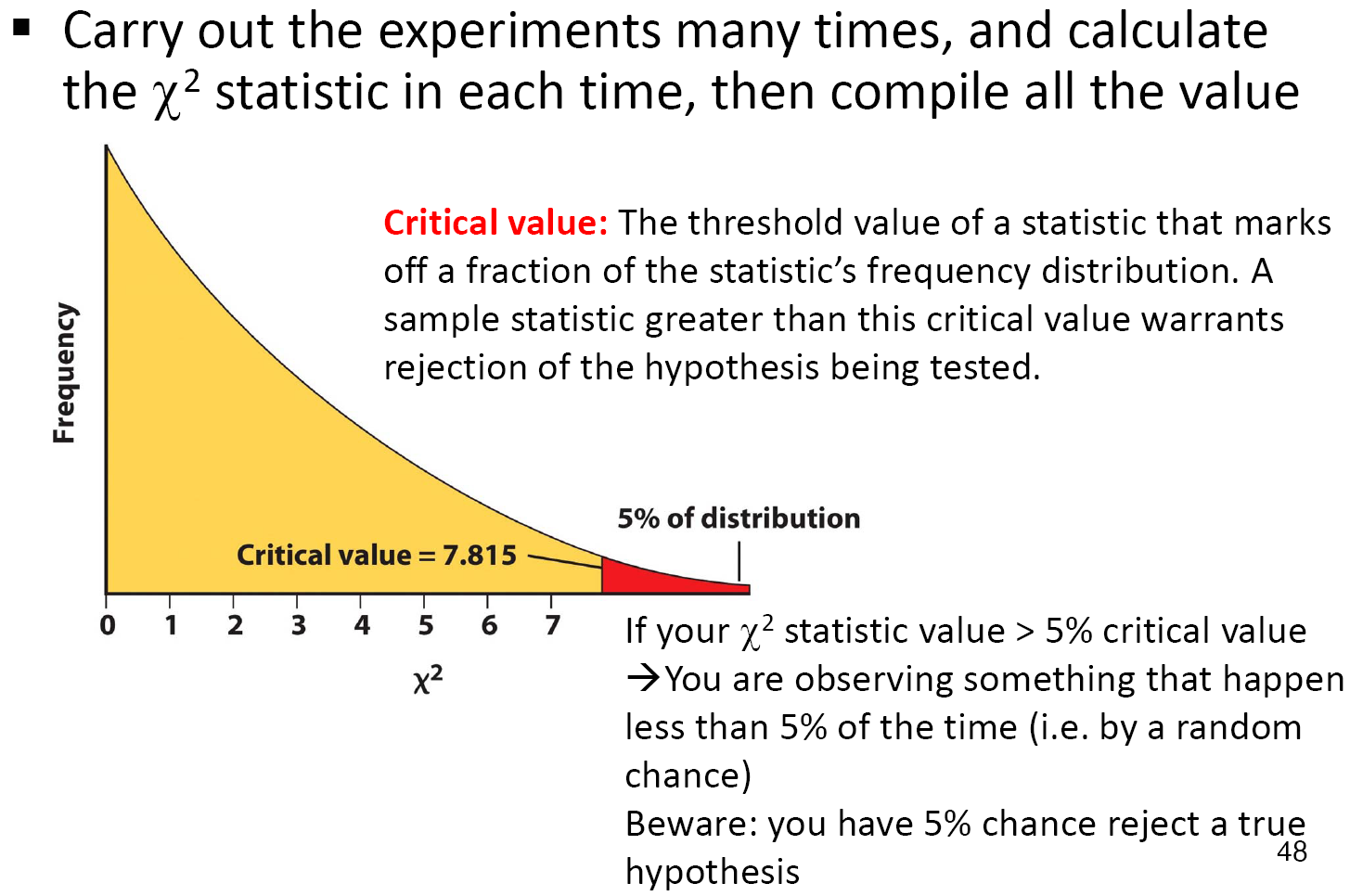
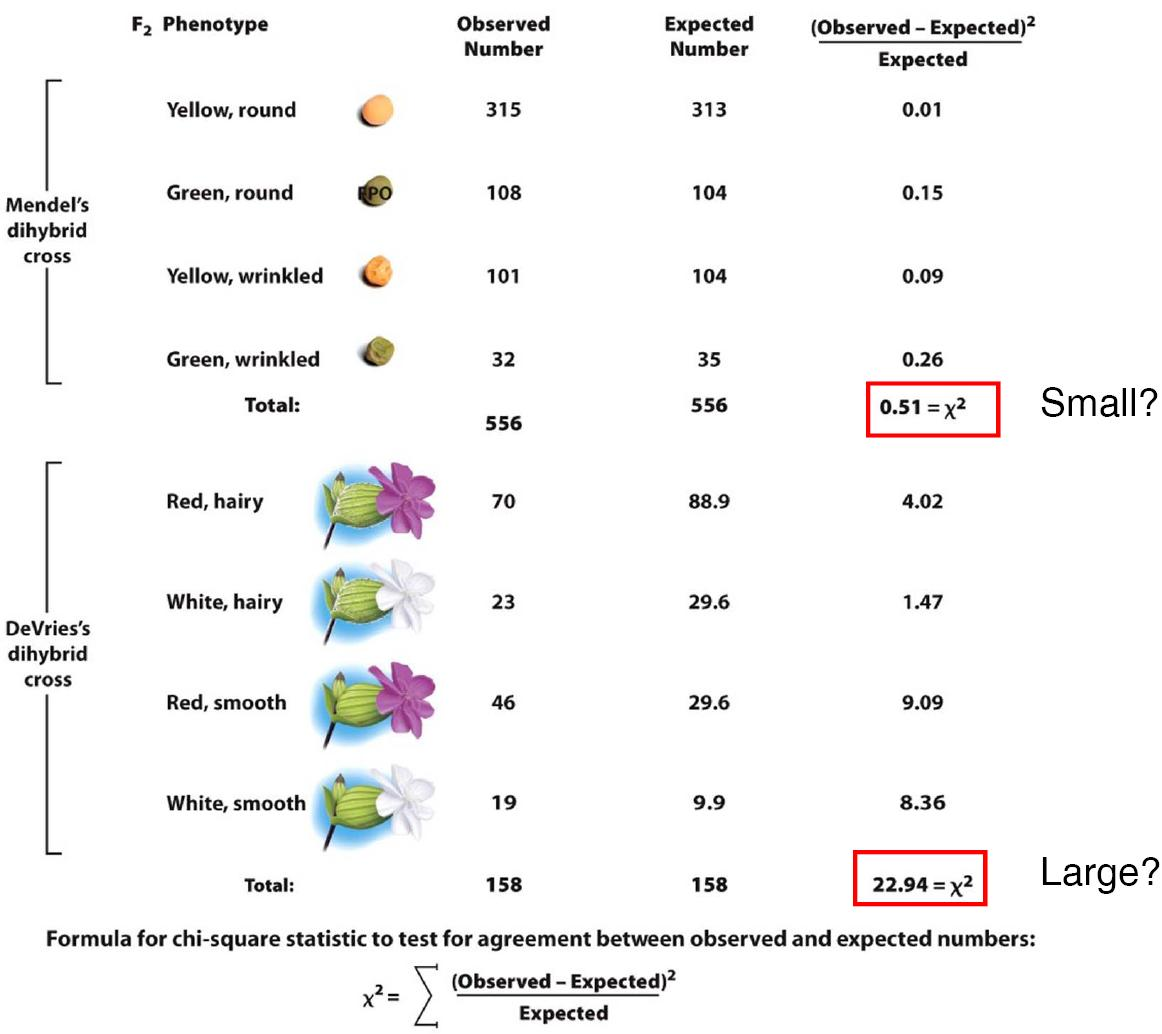
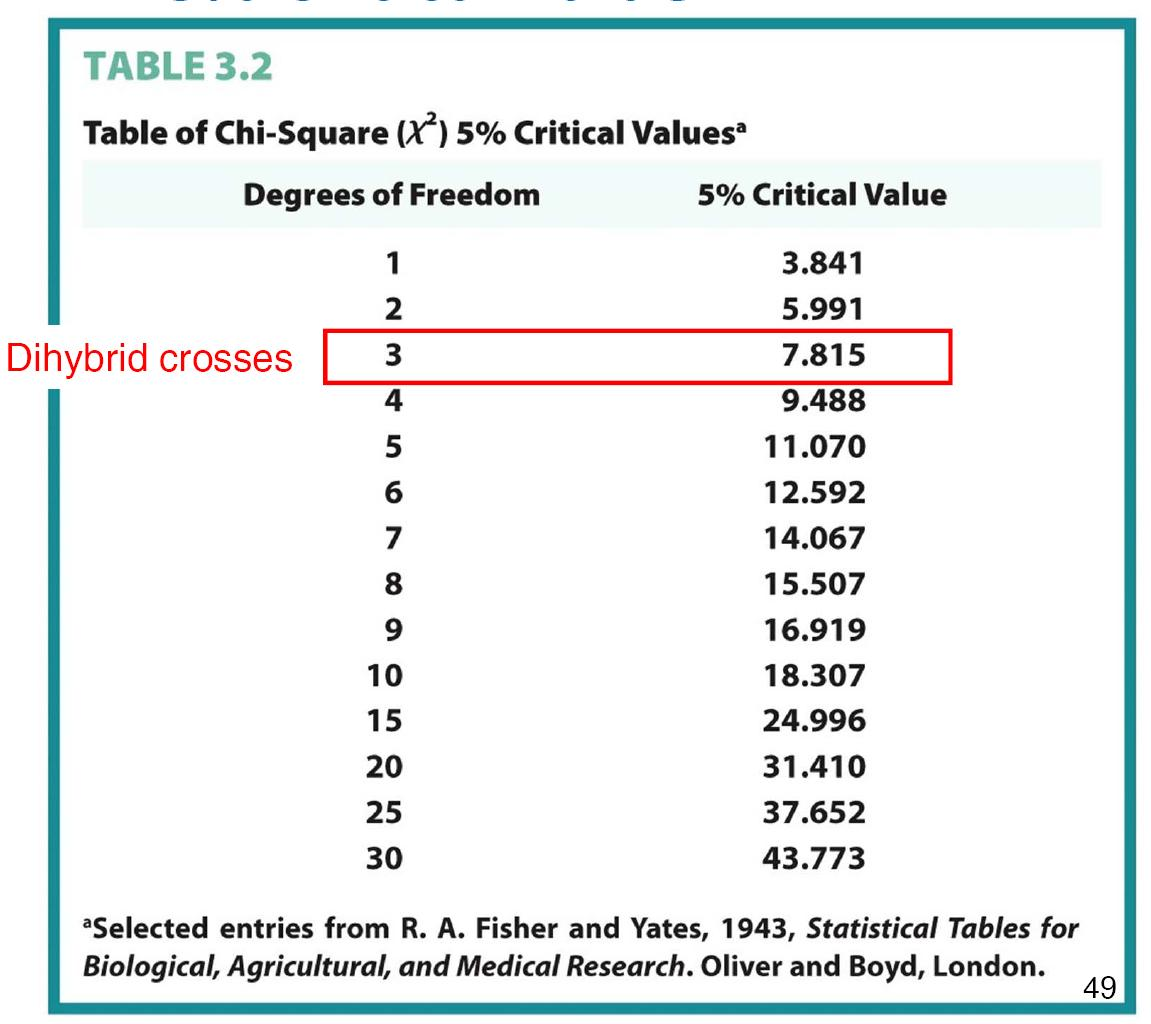
(4)Pedigree Conventions
Mendelian Principles in Human Genetics has many obstacles:
Incomplete family records
Not enough progeny
Uncontrolled environment
Pedigrees are diagrams that show the relationships among the members of a family.
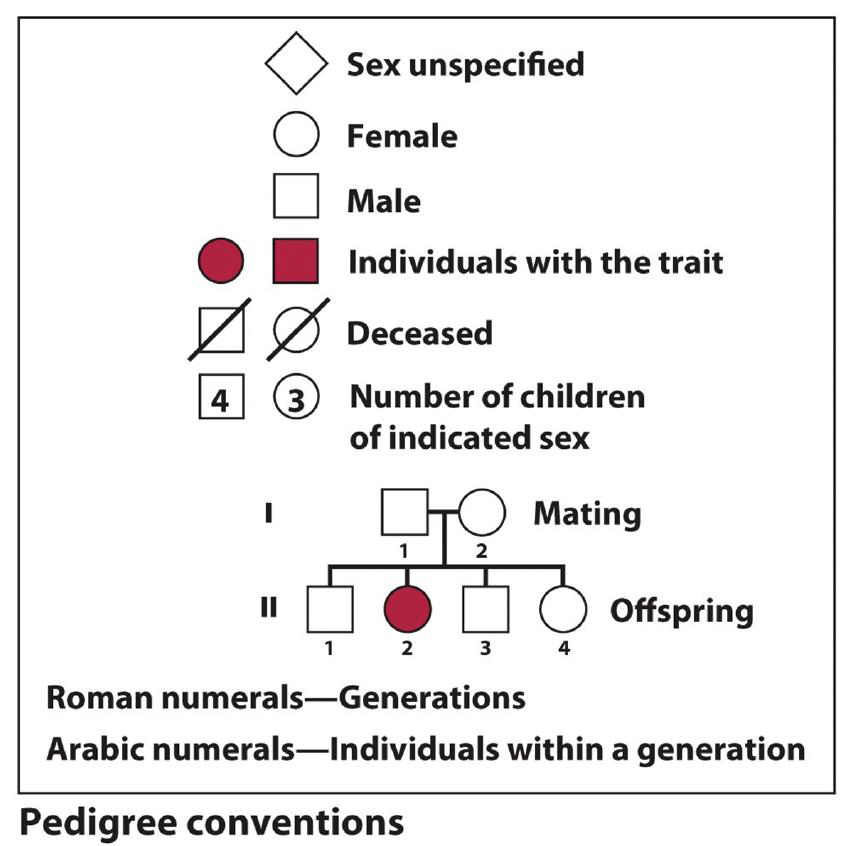
Inheritance of a Dominant Trait
Easy to identify
Every individual who carries the dominant allele manifests the traits
Dominant traits that are associated with reduced viability or fertility never become frequent in a population
Example: Freckles (雀斑);Widow’s peak (美人尖)
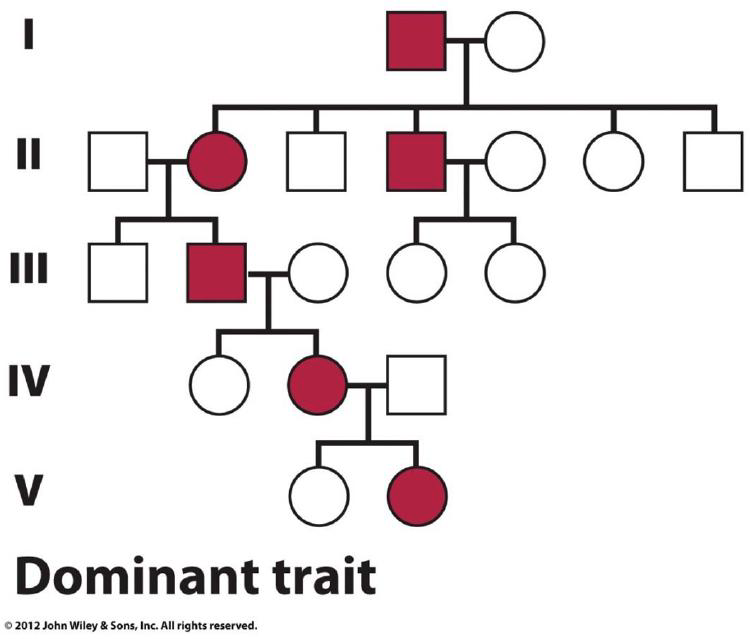
Inheritance of a Recessive Trait
- Difficult to identify
- Several generations are needed to trace the transmission of a receive allele
